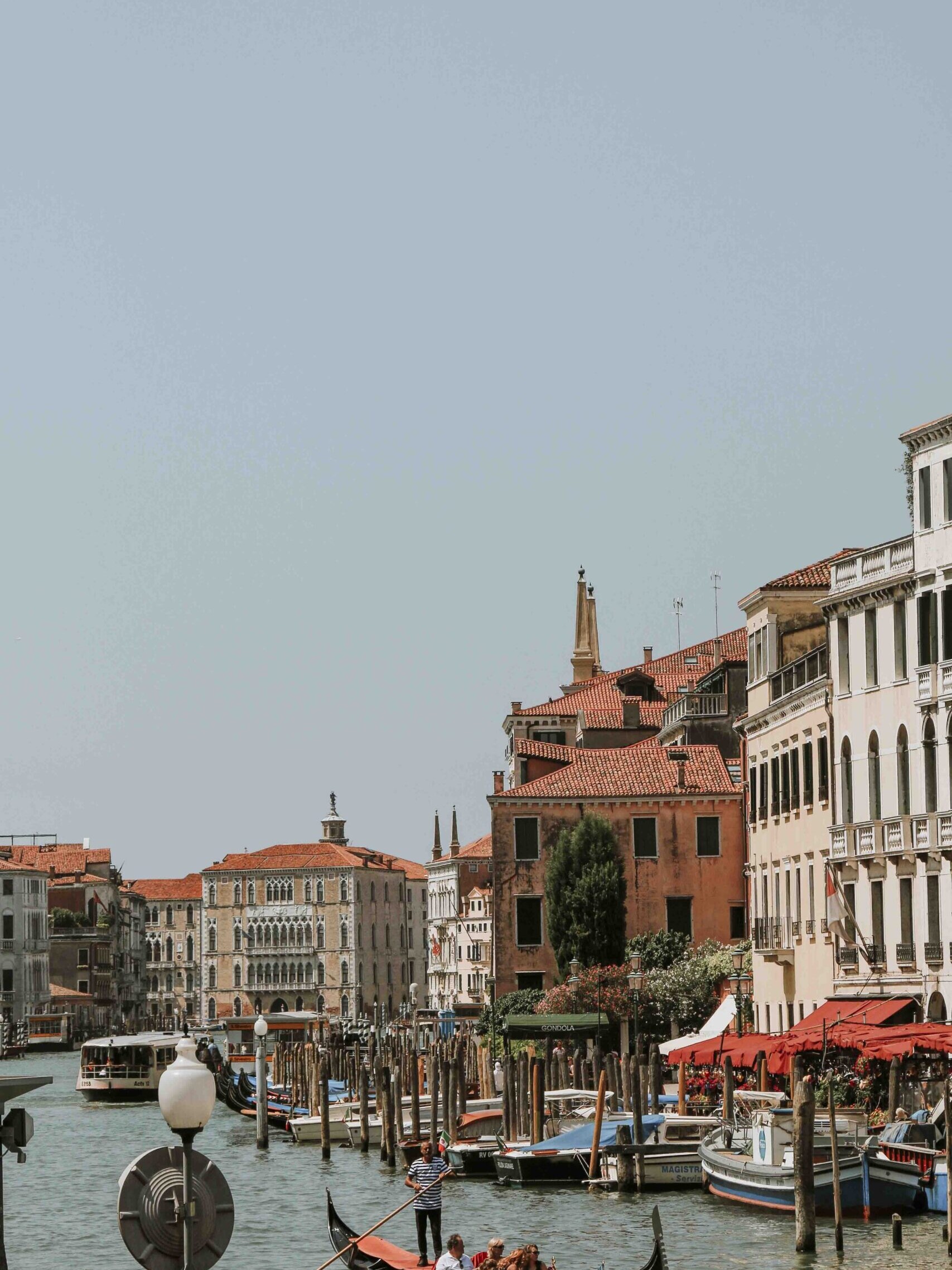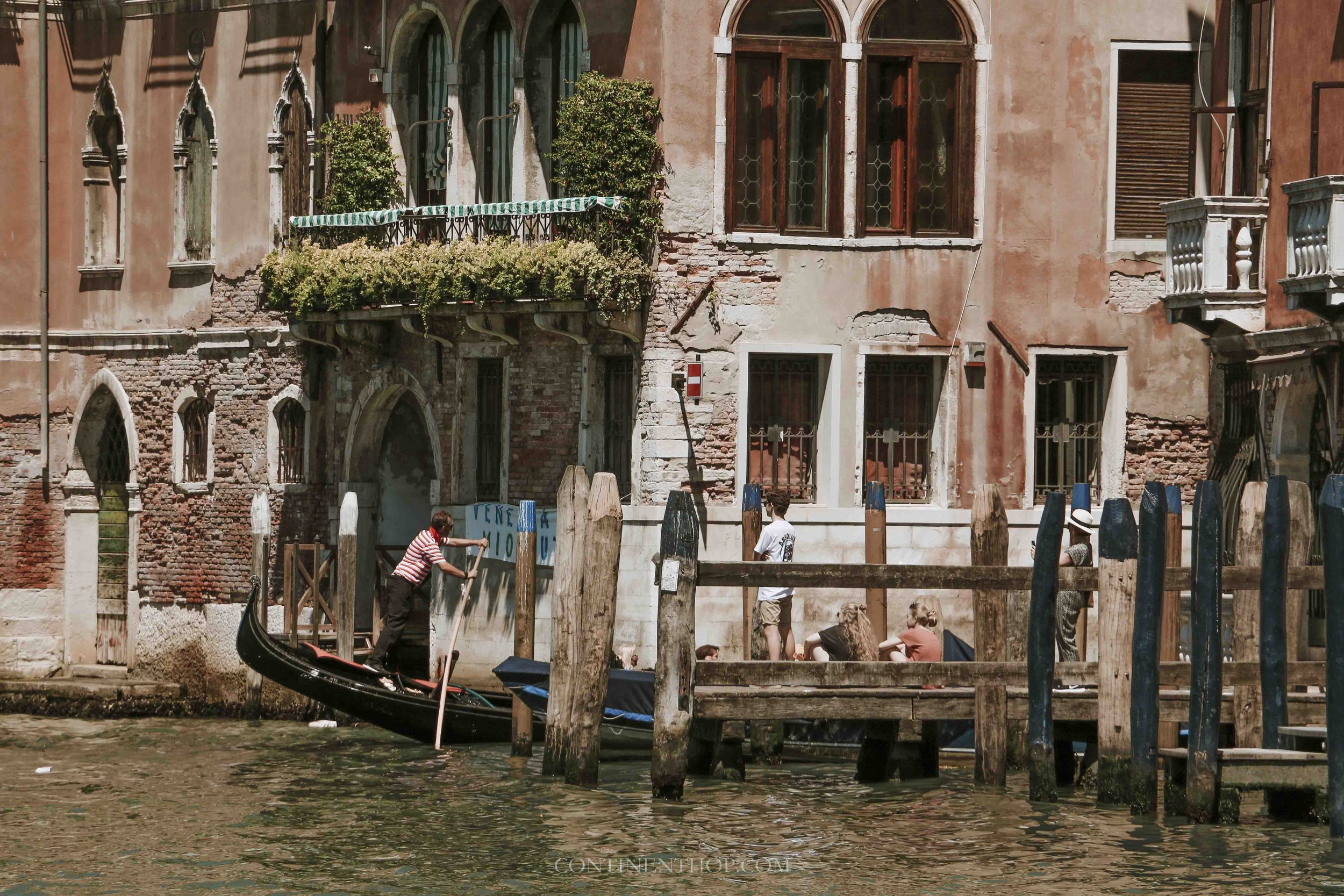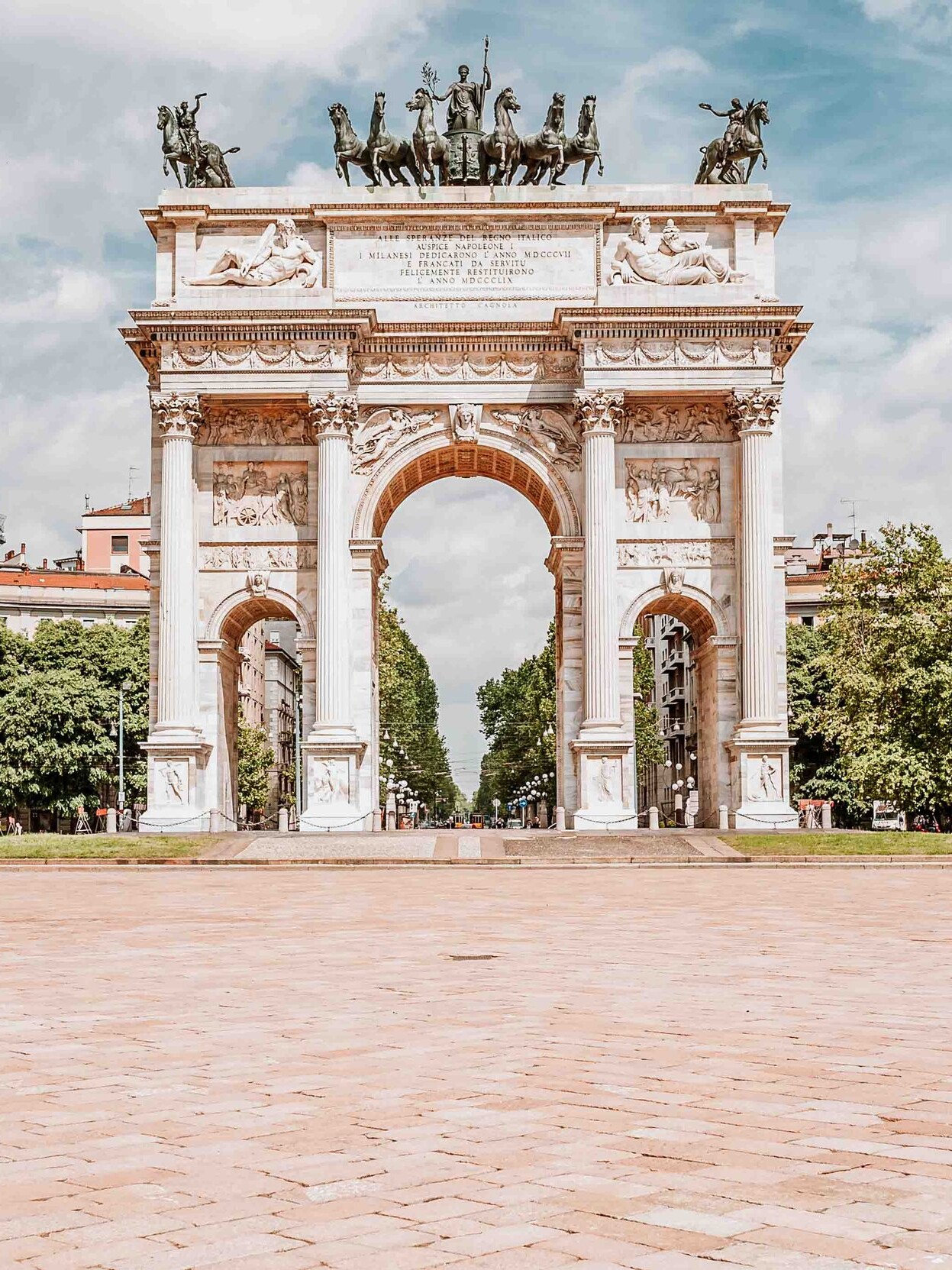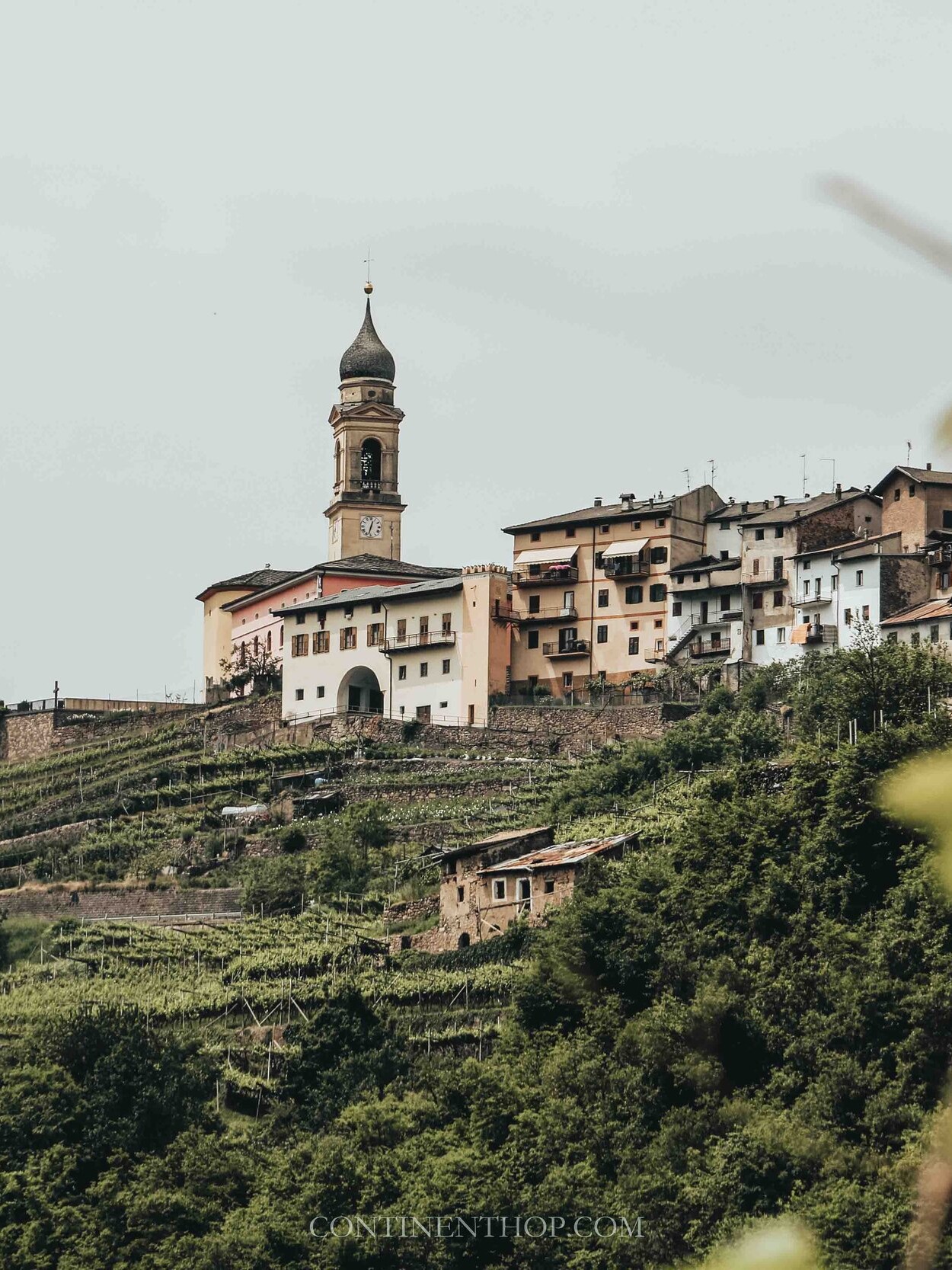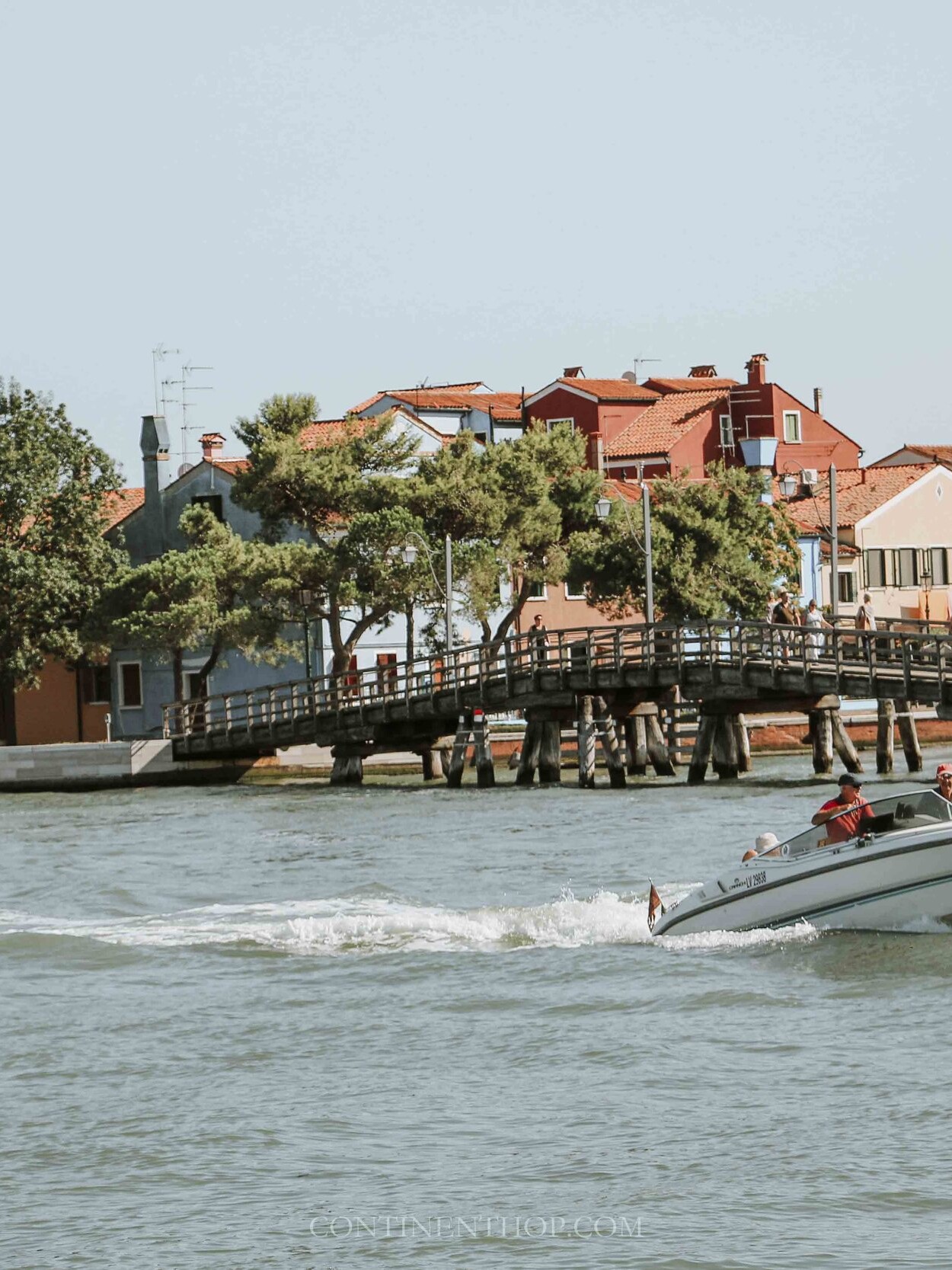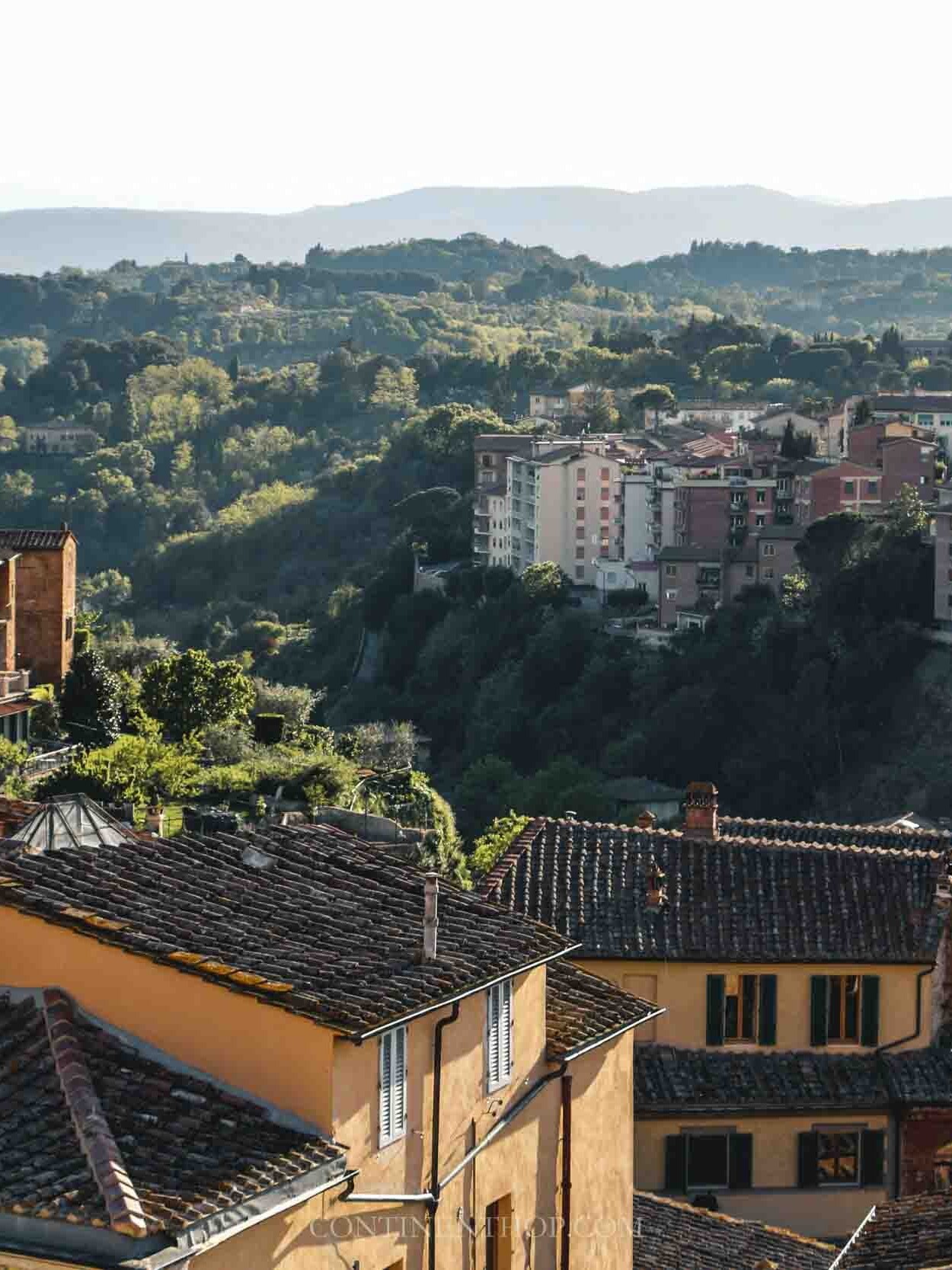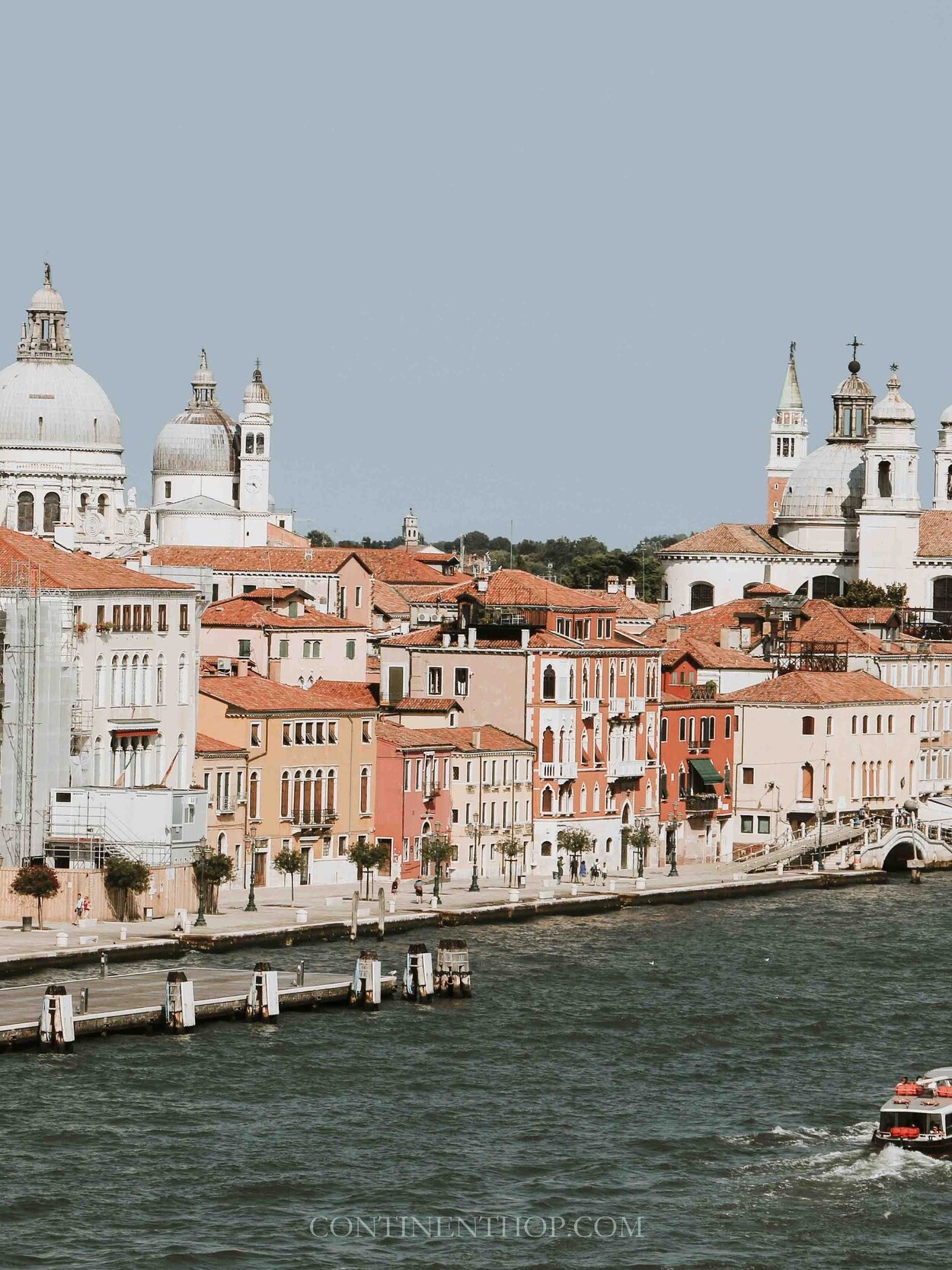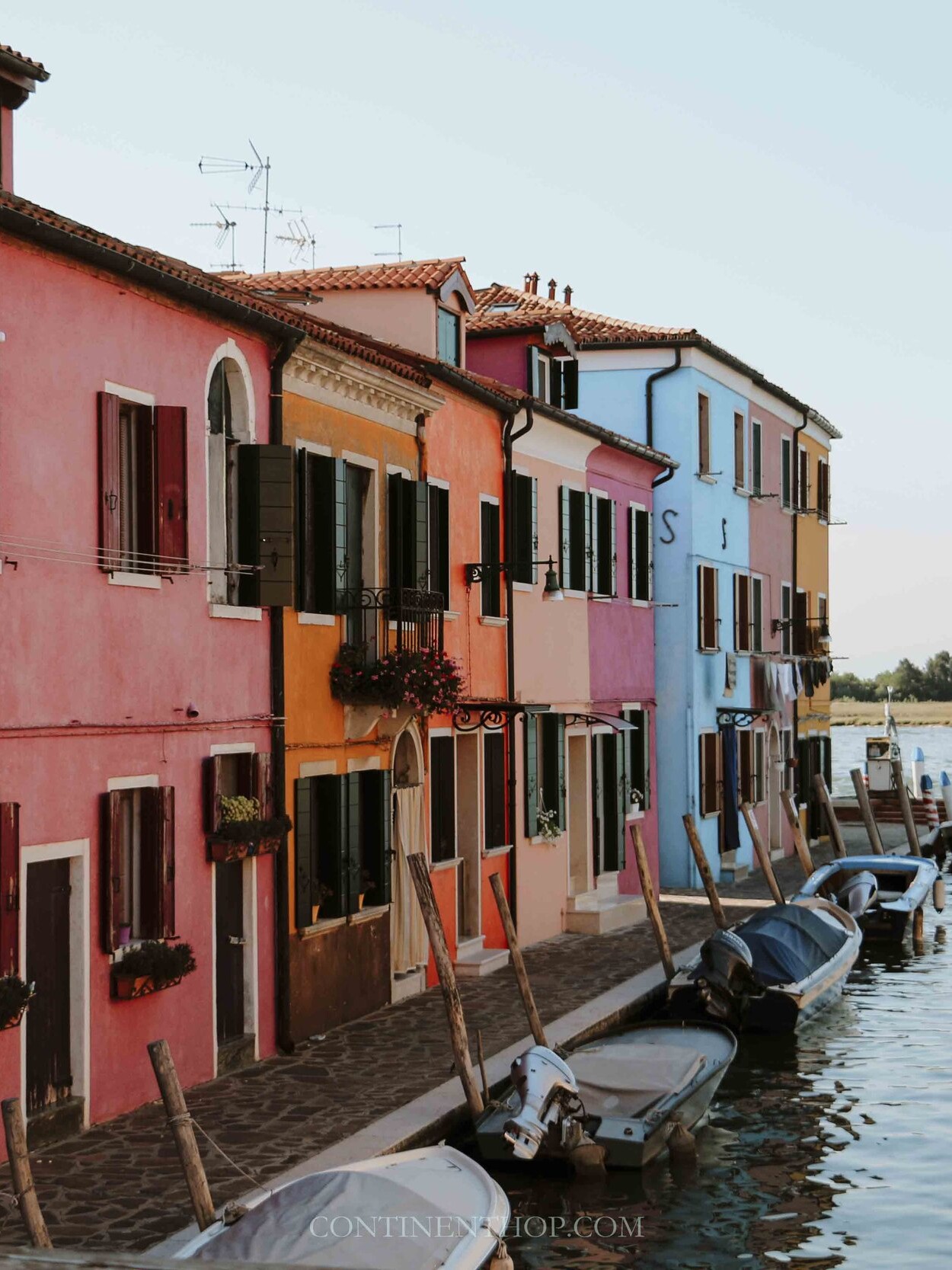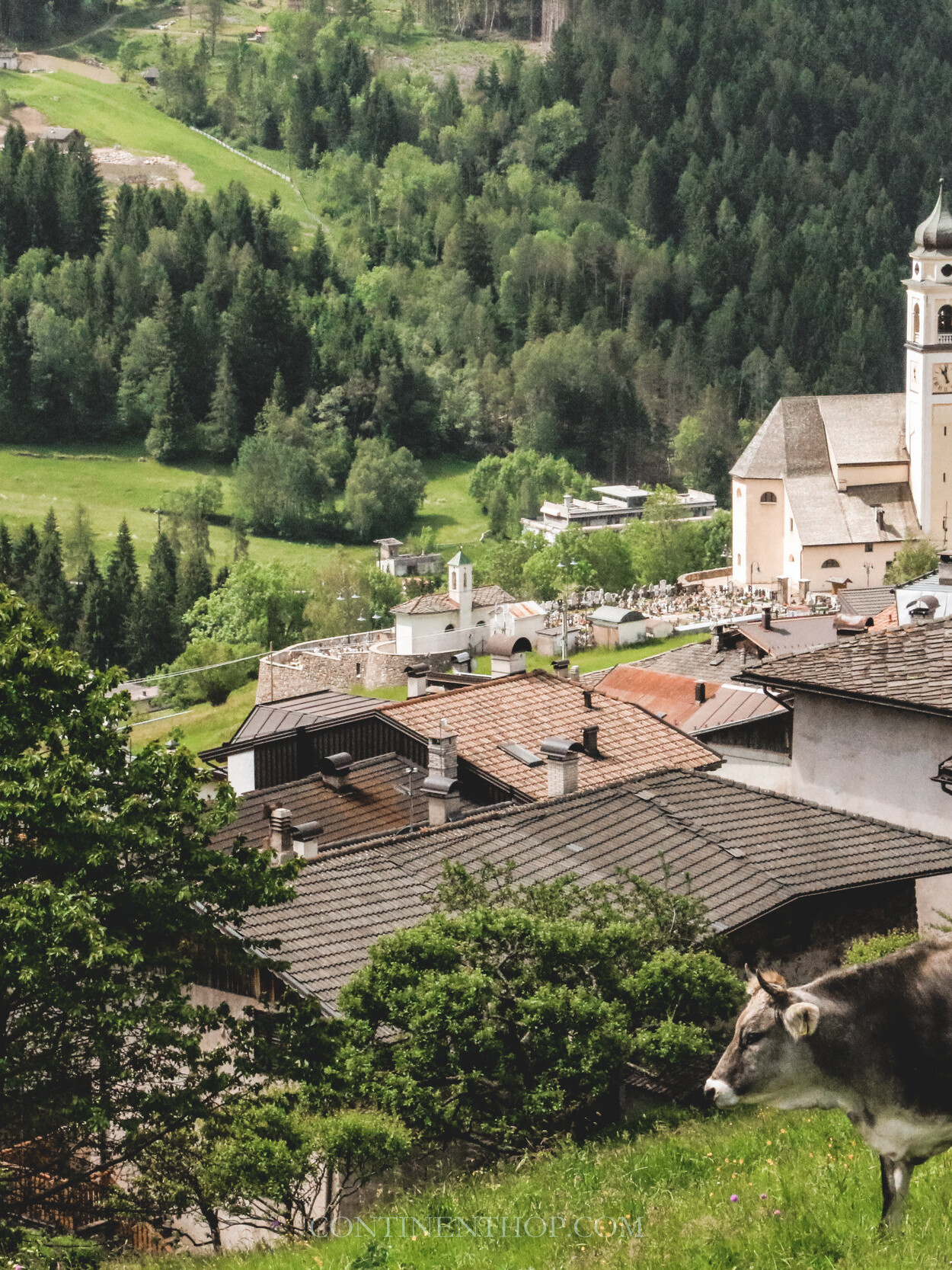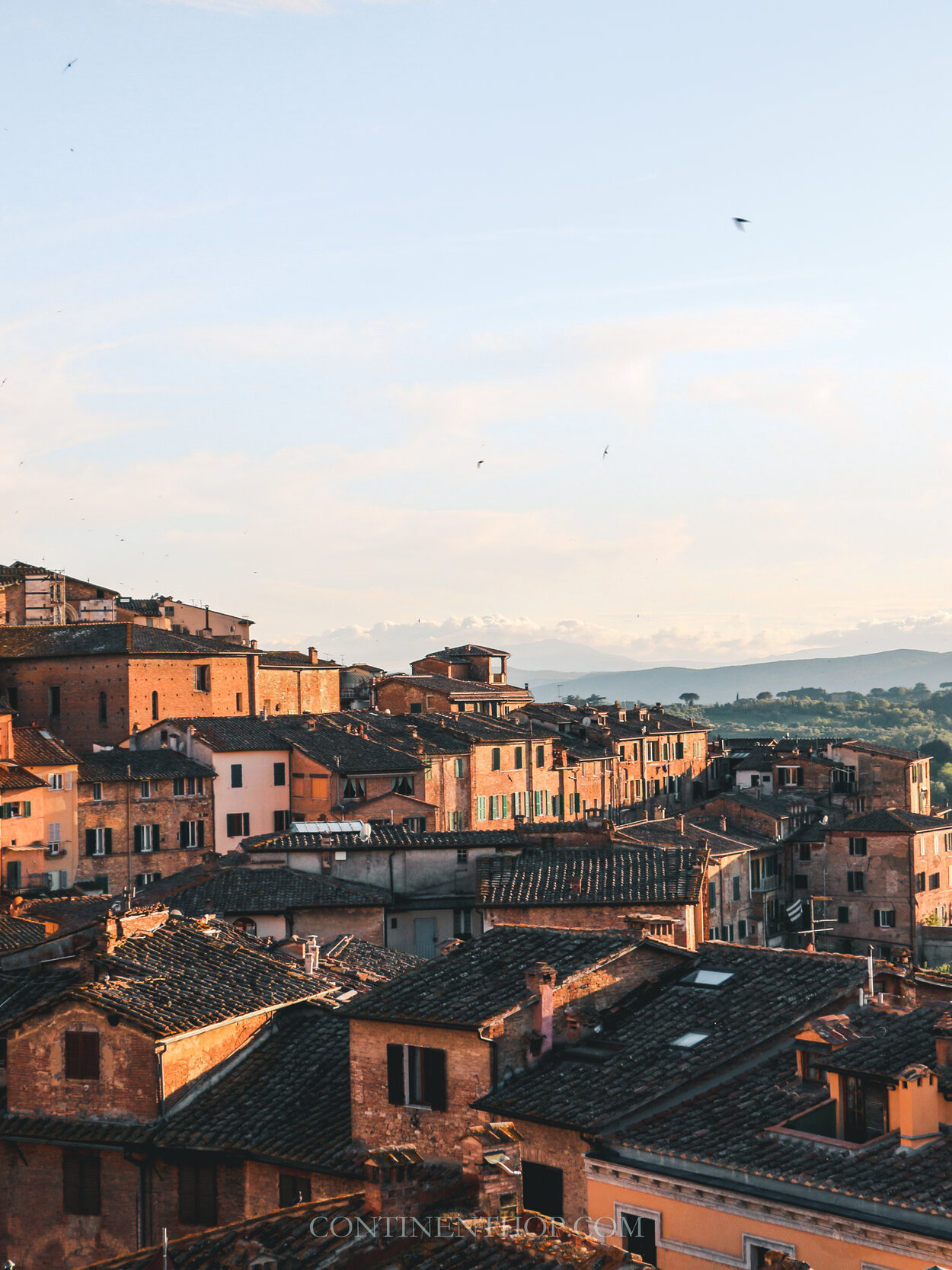A 2 day Venice itinerary is just right to catch a glimpse of the best things to do in Venice. A gondola ride, St.Marks square and the bridges are just some of the attractions you should not miss out on your two days in Venice. Read on for details!
Venice is one of those places where no matter how crowded it gets, it is still worth visiting at least once in a lifetime.
The American writer Truman Capote once said, “Venice is like eating an entire box of chocolate liqueurs at one go.”
Venice does have a lot to offer. It is known for its beauty and as a great romantic destination. The city’s romantic reputation developed due to its portrayal in countless films.
But if you visit the city, you will be able to experience so much more. Stunning art and architecture make visiting Venice worth it. The islands of Murano and Burano make it even better!
While including Venice on your Italy in summer plan, you’ll have to account for more expenditure on accommodation, food, entry tickets, and transport. Venice is more expensive compared to other Italian and European cities.
Through a 2 day itinerary Venice, you cannot cover all of the city. But if you spend two days in Venice, you can see most of the city’s attractions. Here’s an itinerary to make the most of two days in Venice.
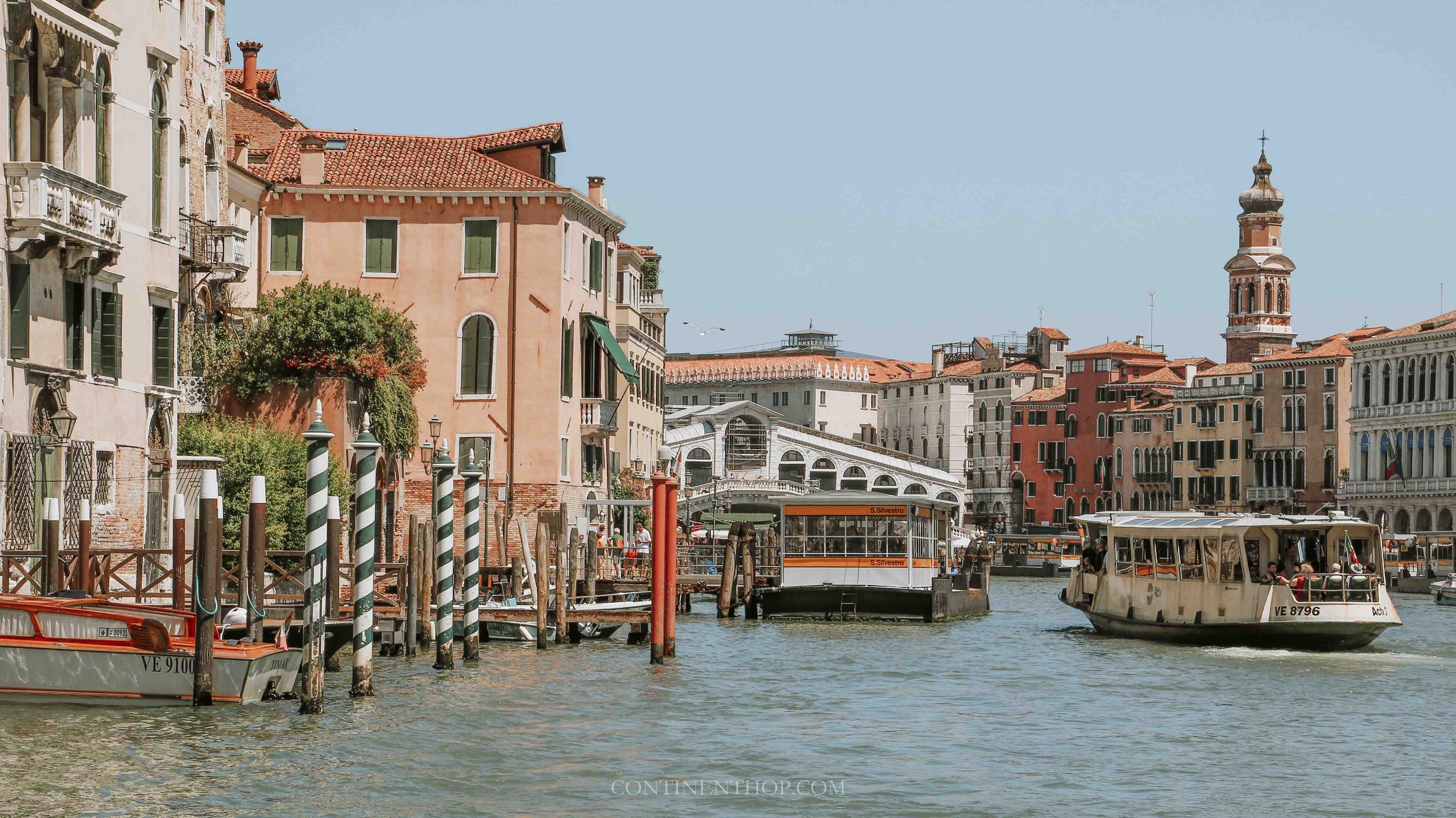
Venice has 118 islands linked together by canals, bridges and buildings.
Venice was formed in the sixth century when Italian refugees fleeing Lombard invaders camped on the island. Over the next few centuries, Venice flourished as a trading centre and would trade with the Islamic world and the Byzantine empire.
The city remained wealthy throughout most of its history. After many political and social changes throughout this time, Venice became a part of the Kingdom of Italy in 1866.
Venetians live in and around the lagoon, and tourism is the primary source of income for the city.
2 day Venice itinerary
How to spend two days in Venice
Approximate cost for your 2 day Venice itinerary
Traghetto: Venetians pay 70 cents for a ride. As a tourist, you’d have to pay 2 euros.
Water Bus/Vaporetto: 7.5€ for a 75-minute ride. Rates for ACTV rides are available here.
Buying tickets is expensive for tourists. If you want to use the Vaporetto, buy a Venezia Unica Pass. The Venezia daily pass allows passengers to travel on all ACTV water routes for 24 hours from the time of initial validation. A one-day pass costs 21€ as compared to 30€ for two days. 3 day and 7-day passes are available as well. Details about the passes are available here. You can buy the pass from the Venezia Unica website.
Children up to six can travel for free on the water bus.
Remember to validate your ticket before onboarding the water bus. There are heavy fines for those caught with an unvalidated ticket.
Gondola: 80€ for half an hour (six people) before 7 PM and 100€ for half an hour (six people) post 7 PM. These are the standard rates per gondola, not per person. So even if two people want to take a gondola ride, you’d have to pay 80€/100€ unless you have others to share the gondola with.
Private water taxi: You’ll have to pay anywhere between 50€-100€ to use a private taxi to get from one place to another in the city. Taking a private water taxi to Burano will cost 130 – 140 € one-way.
Where to stay in Venice?
Venice is small, so you can stay in one suburb and reach another in a reasonably short time. If you are still short on time, you should stay in San Marco/St Mark’s square. San Marco is the centre of the city, and the prime location offers excellent views of the lagoon.
Or you can stay in Dorsoduro (Venice’s university district), San Polo, Sante Croce (main transportation hub) and Catello.
The accommodation cost for Venice 2 days itinerary would depend on the hotel you choose to stay in. But given the city’s high rates, the minimum you would have to pay for a decent hotel is 80€.
Here are some of the top-rated hotels in Venice :
Luxury Hotels
Affordable Hotels
Hostels
Generator Venice and Anda Venice Hostel are the best-rated hostels in Venice.

Day 1 of your 2 day Venice itinerary
You can either walk from one place to another or hop onto a water bus to get from one destination to another.
For Day 1 of this Venice itinerary, you should see Venice’s attractions along the Grand Canal listed here. Spend the evening near Rialto Bridge and take a ride along the Grand Canal (or, even better, one of the quieter canals in the city). You can also end your day by experiencing opera at the Teatre La Fenice, Venice’s grand opera house.
MORNING
St Mark’s Square, St Mark’s Basilica, St Mark’s Tower and Doge’s Palace, Palazzo Contarini del Bovolo
Start your morning early to have enough time for sightseeing. Reach the St. Mark’s Basilica before it opens ideally. Purchase skip the line tickets if you are visiting when there will be many visitors.
St Mark’s Square
Start your Venice sightseeing by seeing St Mark’s Square. St Mark’s Square or Piazza San Marco is the city’s heart. Life has evolved around the Piazza since the city started developing. It is surrounded by ornate buildings, many of which are the main attractions in the Grand Canal.
St Mark’s Square is the only one referred to as a piazza, the other public spaces in Venice are called Campi.
The arcades here are lined with shops and cafes. However, if you want to grab a coffee here, it will be expensive. The cafes in this area charge higher rates for even a simple coffee and pastry that you can get cheaper in other areas. To the west of the square lie many high fashion stores before you reach Harry’s Bar.
St Mark’s square is also the place where a lot of tourists start their gondola ride from. There’s a bus stop/jetty in front of the square. Even if you are here in the morning, expect to see crowds. Lines for the nearby attractions can be overwhelming.
The square has had a pigeon problem for many years, and while the city banned feeding pigeons many years ago, the area still has a considerable pigeon population. Do not feed the pigeons here, as it can attract a hefty fine!
DETAILS
St Mark’s Square
Address: P.za San Marco, 30100 Venezia VE, Italy
Location can be found here
St Mark’s Basilica
One unmissable thing to do on your 2 day Venice itinerary is visit St. Mark’s Basilica is the cathedral church of the Roman Catholic Patriarchate of Venice. It became the episcopal seat of the Patriarch of Venice in 1807 and is one of the most visited cathedrals in Europe.
Irrespective of whichever season you visit Venice, you will undoubtedly find queues outside the Cathedral. It holds the relics of Saint Mark, the city’s patron saint.
The exquisite interiors of the Cathedral are worth seeing. The Cathedral has marble floors, large gold mosaics and Byzantine artwork on its walls and arches. You can also see the treasure of St Mark’s in the Cathedral.
It is a collection of many precious materials and includes Byzantine art, Islamic art and objects of western origin. Next to this is the Pala d’Oro (the altar retable), a golden altar containing Saint Mark’s relics.
The Basilica also has the Saint Mark’s Museum that displays objects that belong to the church, a painting illustrating stories from the life of Saint Mark, manuscripts and fragments of ancient mosaics.
You should also visit the St Mark’s Campanile, the Cathedral’s bell tower from which you can see a beautiful view of the city. The previous Campanile tower collapsed in 1902, and a new one was reconstructed by 1912. St Mark’s Basilica is free to enter, but you have to pay a ticket fee to see the Pala d’Oro and museum. It is open for a limited time on Sunday.
DETAILS
Address: P.za San Marco, 328, 30100 Venezia VE, Italy
Timings: 9.30 AM to 4.45 PM, Sunday: Only the Museum – Loggia Dei Cavalli from 9.30 AM to 2 PM
Cost: 3€, 5€ for Pala d’Oro, 7€ for Museum – Loggia Dei Cavalli, free for children upto 6
Address : P.za San Marco, 30124 Venezia VE, Italy
Timings: 9.30 AM to 9.15 PM
Cost: 10€, free for children up to 6 years of age
Palazzo Ducale (Doge’s Palace)
The Doge’s Palace was the residence of the Doge (Duke) of Venice and the centre of the government until 1797 AD. The gothic masterpiece was made using marble from Verona and is supported by stone arches with magnificent sculptures.
If you walk to the end of the facade on the Grand Canal side before entering the Palace, you can see the Ponte Dei Sospiri (the Bridge of Sighs).
The Palace’s entrance, the Porta Della Carta, links the Doge’s Palace and St Mark’s Basilica. The entrance has carved gothic figures that symbolise how the individual bowed to the state’s power.
The Porta Della Carta leads to the central courtyard through the Foscari Arch. Using a general admission ticket, you will be able to see the Sala del Maggior Consiglio (lower house of the Venetian Parliament), Scala Ordo (Stairs of Gold), Sala del Collegio (the Cabinet), and Sala del Senato (the Senate).
You should buy a ticket or take a guided tour that lets you see the Chamber of the Three Heads of the Council of Ten, Inquisitors Hall, the Stanza Della Tortura (where confessions were forced from prisoners) and the Doge’s private apartments along with the rooms mentioned above.
If you want to see these, you’ll have to book the Secret Itinerary Tour in advance. You can also see the prisons and Armoury in the Palace.
The Palace has been converted into a museum since 1923 and is one of the eleven museums managed by the Fondazione Musei Civici di Venezia (MUVE). If you buy the Venice Museum Pass, Doge’s Palace is included in the list of museums you would get access to.
DETAILS
Address: P.za San Marco, 1, 30124 Venezia VE, Italy
Timings: 9 am – 7 pm
Cost: 26€ for adults, 14€ for students and seniors
The ticket will also give you access to the Museo Correr, Museo Archeologico Nazionale and Monumental Rooms of the Biblioteca Nazionale Marciana

Palazzo Contarini del Bovolo
The Palazzo Contarini del Bovolo is known for its spiral staircase, the Scala Contarini del Bovolo. Once you climb this staircase, you can reach a balcony that offers a panoramic view of the city. In the Palazzo, you can also see a collection of sculptures and paintings from Venetian artists such as Guardi, Sansovino and Tintoretto.
The Palazzo Contarini del Bovolo was a family home for the Contarinis, a powerful family in the fourteenth century. Pietro Contarini decorated this place with the staircase towards the end of the fifteenth century.
Giovanni Candi, an architect and carpenter from Veneto, constructed the staircase. The staircase is formed by 80 steps screwed counterclockwise in a cylinder of walls for 26 metres.
In 1849, the staircase became the property of the Fraterna Dei Poveri di San Luca, an institution providing assistance to the poor in Venice.
You can buy tickets on the site or online. The staircase is only accessible to a limited number of people at a time. You can book the ticket here.
DETAILS
Address : Scala Contarini del Bovolo, 4303, 30124 Venezia VE, Italy
Timings: 09.30 AM to 5 PM in winter (until February 28), 10 AM to 5.30 PM in summer (from February 28)
Cost: 8€, free for children up to 12 years
Location can be found here
AFTERNOON
Basilica Santa Maria Della Salute
The Basilica Santa Maria Della Salute is referred to as the Salute by locals. It is a Roman Catholic church with a large dome, visible from all over the city and often used in photographs of Venice.
It is an important religious building in Venice that started being built in 1631 to celebrate the end of the Italian Plague (1629-1631). The Basilica was consecrated fifty years later in 1687.
The building has an octagonal shape with chapels on both sides. The Senate held a competition to choose who would build the church. Baldassare Longhena won the competition and built the Baroque-style church.
The Basilica has simple interiors filled with impressive art from Italian artists Titian and Tintoretto.
Every year on November 21, Venetians cross a pontoon bridge on the Grand Canal to reach the Basilica, pray and light a candle for Virgin Mary.
Entry to the Basilica is free, but you need to pay to enter the Sacristy.
You can book a guided tour from the Basilica’s website here.
DETAILS
Basilica Santa Maria Della Salute
Address : Dorsoduro, 1, 30123 Venezia VE, Italy
Timings: Opening hours vary; available here
Cost: Entry to the church is free. €5-€10 for the Sacristy and Picture gallery
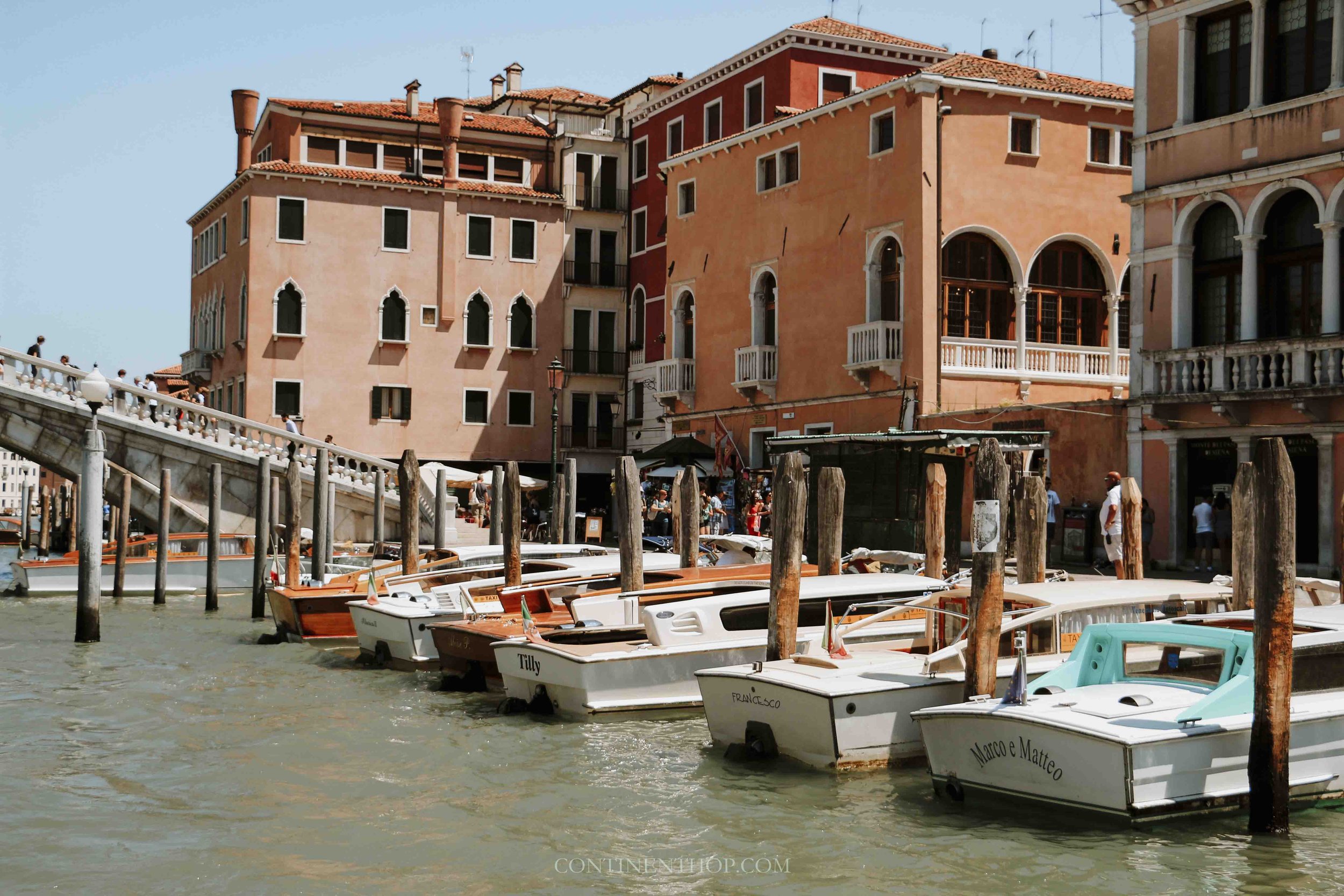

Rialto Bridge
The oldest of the four bridges spanning the Grand Canal, the Rialto Bridge is a single stone-arch bridge that connects the suburbs of San Marco and San Polo. The Rialto bridge was built by Antonio da Ponte at the end of the sixteenth century.
Both sides of the bridge make up the Rialto market, where you can buy fresh seafood and vegetables in the morning. You can also shop for souvenirs from the Rialto market.
Bridges in Venice
Venice is also called the ‘city of Bridges’ amongst many other things. About 400 bridges exist on the many islands of the city. While there are many nondescript ones, many bridges are famous and embody the city’s architectural beauty.
The Grand Canal has four bridges –
Ponte Degli Scalzi (Bridge of the Barefoot Monks)
Ponte dell’Accademia (Academy Bridge)
Ponte della Costituzione (Constitution Bridge)
Ponte Di Rialto (Rialto Bridge)
You will pass from under the bridges if you take a Vaporetto or gondola ride along the Grand Canal. If you’d like to stand on the bridge and take photos, be prepared to stand amongst crowds, especially if you visit in summer.
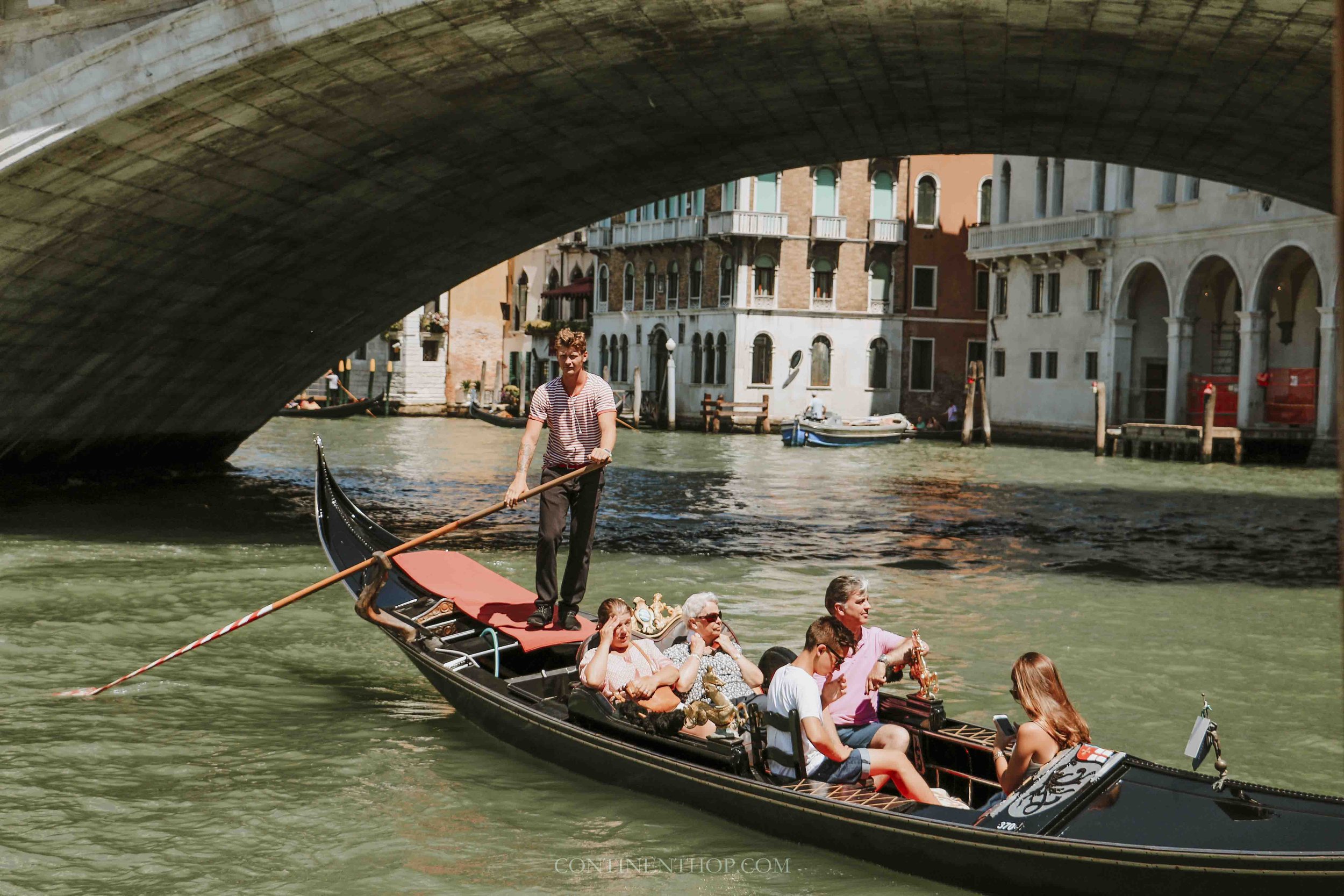
Librairie Acqua Alta
The Libreria Acqua Alta is a unique bookstore in the city where books are stored in bathtubs, boats, and high shelves. ‘Libreria Acqua Alta’ means ‘Bookstore of high water’. ‘Acqua Alta’ or ‘High water’ refers to a phenomenon which takes place in Venice in winter when a combination of factors causes a larger inflow of water in the lagoon.
As a result, the lowest parts of the city, such as the St. Mark’s square, are under a few inches of water for a few hours. Acqua Alta is not the same as flooding.
The book store was started by Luigi Frizzo, who decided to create this store with its distinctive decor and fill it with Italian and English books from varied genres. You can also find some rare books dedicated to the owner’s passions.
The store has a beautiful staircase made entirely of books! Luigi didn’t want to throw away encyclopaedias damaged by the high water, so he made a staircase out of these books.
For animal lovers, too, this store is a treat. Luigi has adopted stray cats, and at any point, you’ll find fluffy cats perched on top of the books or around the store.
The shop is such that it’s unlikely you will be able to enjoy it when it’s crowded. If you have a flexible itinerary, pick a time to avoid the crowds.
DETAILS
Librairie Acqua Alta
Address: C. Longa Santa Maria Formosa, 5176b, 30122 Venezia VE, Italy
Timings: 09 am to 7.30 pm
Skip the library visit if you don’t have enough time while following this Venice in 2 days itinerary and head to a bus stop to ride the gondola.
Location can be found here
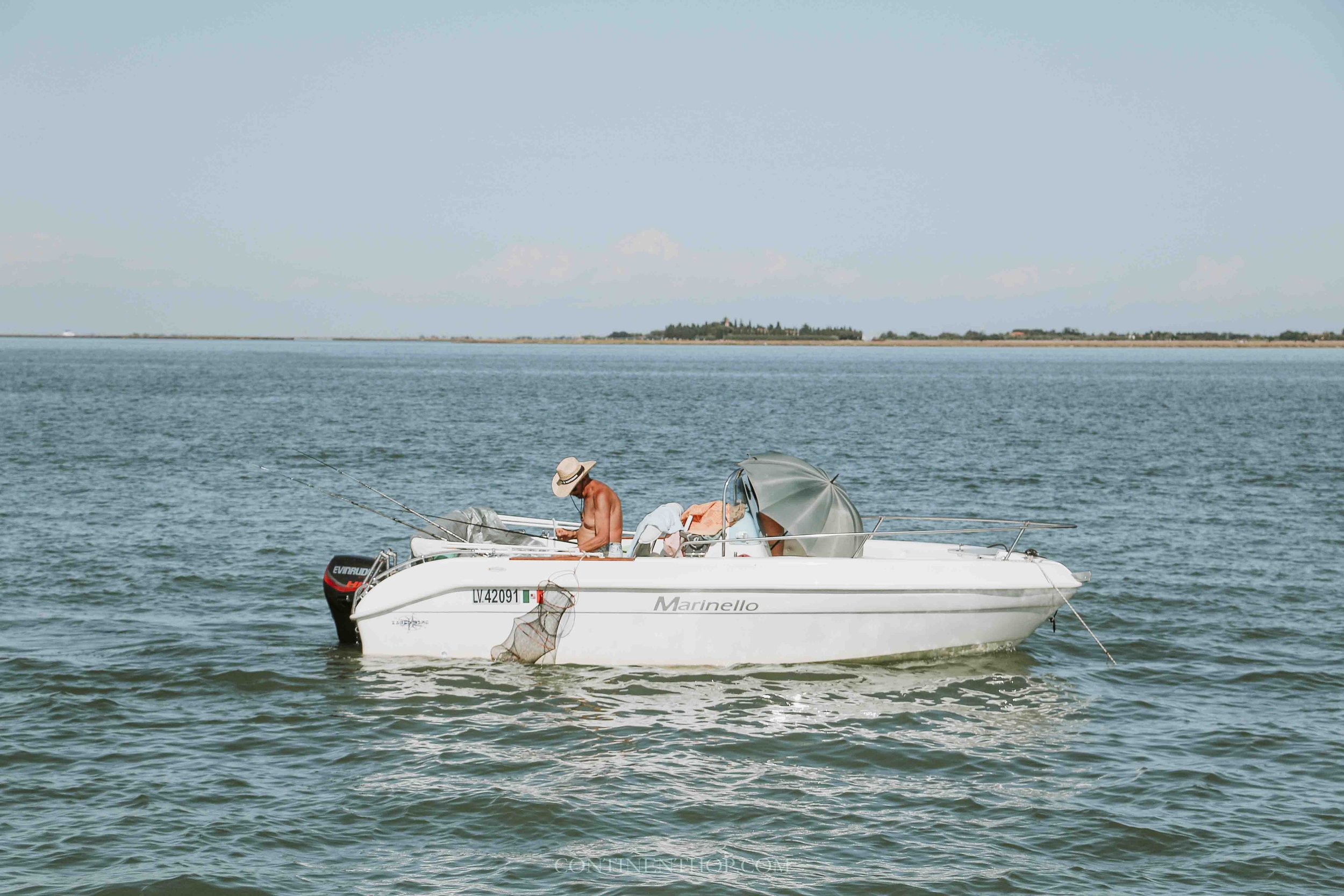
EVENING
In the evening, you could take a Gondola ride across the city. While most tourists take Gondola rides, some are disappointed after it.
Part of the reason could be the high fares. Gondola fares are fixed. So you will pay around euro 80-euro 100 for a gondola ride.
A 40 minute ride costs 80 euro (for six people) and euro 100 (for six people) post 7 pm.
Six people can sit on a Gondola.
So you can share a gondola to save some money. If you book a Gondola through a hotel or agency, you’ll pay extra, so book directly.
Gondolas have comfortable seats and blankets but aren’t covered, so it’s best to take a gondola ride when the sun has gone down.
You can take a gondola ride along the Grand Canal, but many people prefer to take a Gondola ride along the other quieter canals of the city.
This is because the Grand Canal tends to be used by many tourists, and you may find back-to-back gondolas rowing here in the evening.
For an experience involving quiet time on the canal, talk to a gondolier and pick a ride from the San Polo, Campo San Barnaba area and Jewish Ghetto area.
Teatro La Fenice
Suppose you have already taken the Vaporetto or traghetto to get from one place to another, and a gondola ride doesn’t seem special enough. In that case, you can skip this, have an early dinner and enjoy a concert at the Teatro La Fenice.
The Teatro La Fenice is a landmark opera house in Venice. It was one of the most well-renowned theatres in the world in the 1900s. The theatre has been burned down and rebuilt three times till now. It holds a New Year’s Concert every year to commemorate its reconstruction after 1996.
You can check the calendar for what’s on at the theatre here.
DETAILS
Address: Campo S. Fantin, 1965, 30124 Venezia VE, Italy
Cost: 50€ to €100 – exact ticket price varies for different performances
Location can be found here

Day 2 of your 2 day Venice itinerary
For Day 2 of this Venice itinerary, I suggest seeing the Peggy Guggenheim Collection and Galleria Dell’accademia in the morning and spending the other half of the day taking a trip to Burano.
You could follow the itinerary for Day 2 of this Venice 2 day itinerary in reverse order. Especially if you are visiting Venice in summer and want to visit Burano early in the morning when there will be comparatively lesser people on the island, you can make the Burano trip in the morning and see the museums in the latter half of the day.
Except, keep in mind, if you plan to do this on a Monday (visit Burano in the morning and then the museums), you’ll miss out on the Galleria Dell’accademia: the museum closes at 2 PM on Mondays.
MORNING
Peggy Guggenheim collection
Peggy Guggenheim was an art collector and socialite from the wealthy Guggenheim family from America. In her book, ‘Out of This Century: Confessions of an Art Addict’, Peggy expressed that she “loved Venice more than any place on earth” and felt she would be happy alone in Venice.
She spent the last three decades of her life in the Palazzo Venier Dei Leoni, the building which houses the collection. After her death, the collection was passed on to the Solomon Guggenheim Foundation, which turned the home into a museum.
The Peggy Guggenheim collection contains some of the most important modern American and European art embracing surrealism, expressionism and cubism. These paintings were collected by Peggy between 1938 and 1947, who had decided early in life to dedicate herself to collecting art.
The collection displays Cubist work from Georges Braque and Pablo Picasso and Surrealist art by René Magritte, Max Ernst and Salvador Dali. Other well-known artists whose work is displayed here include Mark Rothko, Jackson Pollock, and Francis Bacon.
The terrace has modern sculptures made by Marino Marini, Henry Moore and Alberto Giacometti.
The building is located on the Grand Canal, a few metres away from the Galleria Dell’accademia. If you want to buy the ticket online, buy it here, or it can be purchased at the ticket office from 10 AM – 5.15 PM.
DETAILS
Address: Dorsoduro, 701-704, 30123 Venezia VE, Italy
Timings: 10 AM – 6 PM every day except Tuesday, closed on Tuesday.
Cost: 16€ for adults, 14€ for seniors

Galleria Dell’accademia
The Gallerie dell’Accademia has the most extensive collection of Venetian art from the 14th to 19th centuries. It contains works of prominent Italian artists such as Tiziano Vecelli, Paolo Veronese, Giovanni Bellini, Paolo Veneziano and Canaletto. The gallery opened to the public in 1817 and has over 800 paintings.
You’d need an hour and a half to see the gallery properly. It’s best to start on the first floor. The paintings are exhibited chronologically. The ground floor exhibits sculptures and paintings from the period 1600 to 1880.
The gallery is located along the Grand Canal opposite the Accademia bridge. Book tickets in advance to avoid long queues. Tickets can be booked here. A digital map of the museum is available here.
DETAILS
Address: Campo della Carità, 1050, 30123 Venezia VE, Italy
Timings: 8.15 AM – 2 PM on Mondays, 8.15 AM TO 7.15 PM from Tuesday to Sunday
Cost: 12€ for adults above age 25, 2€ for visitors aged 18-25, free for visitors under 18 years old
AFTERNOON AND EVENING
You can spend the afternoon and evening on the nearby colourful island of Burano.
Take the route 12 water bus to Fondamenta Nova ferry terminal (F.te Nova) to Burano. A ferry leaves every 20-30 minutes and stops at Murano, Mazzorbo, Torcello, Burano, Treporti and Punta Sabbioni. Find all details for a from Venice to Burano ferry here.
The island is mainly known for its colourful, brightly painted houses. Half a day is enough time to get to the island, walk around and get back to Venice.
Read about the things to do in Burano in this post.
Venice itinerary 2 days – Alternatives for Day 2
Most Venice itineraries include the Galleria Dell’accademia and Peggy Guggenheim collections.
Art lovers are particularly keen on visiting this. If you’d like to skip the galleries in your itinerary for Venice, you can take a more extended trip to the islands: include Murano (visit a Murano glass factory) and Torcello (see the Cathedral of Santa Maria Dell’Assunta) along with Burano.
Or if you’d only like to see Burano and are here when the weather is good, you can spend your evening relaxing at the Lido di Venezia, an island with a great beach that’s not too far from Venice. From San Marco, several lines run ACTV buses/Vaporettos to Lido that you can take to reach the island.
Related: Visiting Italy in Summer? Here are all the places you can see during an Italy in summer holiday vacation

Best time to visit Venice
Venice has four seasons in these months –
March to May: Spring
June to August: Summer
September to November: Autumn
December to Winter: Winter
There are tourists in the city during most of the year.
The peak season is from June to August. I don’t recommend visiting Venice in the peak season, not just due to the higher number of tourists but because the city is pretty hot and humid at this time. Avoid visiting in August particularly. It is too hot and crowded due to the school holidays.
Plan your 2 days Venice trip in April, May, September, and October as these are the best months to be in Venice.
The winter months are good if you want to avoid crowds (except during the Venice Carnival), but not ideal as there is more chance of rain and flooding on the island.
Getting around Venice
Venice is a pedestrian-friendly city. You can actually see many places by walking from one place to another. You can walk all over Venice! The main cluster of islands is well connected by bridges.
Google Maps is not reliable if you want to explore the city on foot. Pay attention to the signs posted around the city. Street names frequently change, dead ends and roads weaved between canals can make navigation confusing.
Exploring by foot is a great way to see the bridges and get some photos of the cobbled streets of Venice.
Besides walking, you can get from one place to another using any water transport options in Venice. You can use a Vaporetto (water bus/ferry), traghetto, gondola or water taxi. Using a traghetto is the cheapest option.
The other reasonable (though still a pricey option for tourists) is using the Vaporetto/water bus. Venetians pay less for the traghetto and water bus, and tourists are charged more.
A gondola is a good option if you want to take a leisurely ride to soak in the city’s atmosphere. Private water taxis are costly, and using this option would make sense if you are travelling in a group, so you would be paying less per person.
Traghetto and gondolas are similar open boats. Gondolas are more luxurious, have seating options, and are often well painted/decorated. Traghetti are simple, open boats used by many locals.
You should be able to spot the difference when you see them. You can see boards across the grand canal with ‘traghetto’ written on them, and you’ll be able to figure out where you can board one.

FAQs for your Italy in summer holiday
Is 2 Days in Venice enough?
2 days in Venice is enough to see the highlights of the city. Many of the attractions are along the Grand Canal. You can live in San Marco and see the most famous buildings in two days. If you are a slow traveller or want to see everything Venice offers, 3-4 days is ideal.
How do you spend two days in Venice?
Spend two days in Venice, seeing the attractions along the Grand Canal and taking a trip to Burano. You can make the Burano trip in half a day. So it’s possible to include Burano in Venice 2-day itinerary.
How many days do you need in Venice?
Plan a 2 day Venice itinerary in the city if you want to cover the city’s highlights. Or 3-4 days if you want to see everything in the city.
Through a 2-day itinerary in Venice, you should be able to see many of its prominent attractions such as the Doge’s Palace, St Mark’s Basilica and the Grand Canal.
Is 48 hours enough in Venice?
48 hours is enough in Venice only to see some of the city’s top attractions. If you want to take a trip to the nearby island of Murano, Burano and see everything in Venice, you need 3-4 days.

Award-winning Analyst, multi-nominated digital content creator and photographer Lavina Dsouza's words capture stories about culture and tradition mainly through its food and people. She has written and contributed to publications such as The Washington Post, Lonely Planet and Matador Network, to name a few. She is the editor of UntraditionalHumans.com, a non-profit created to share inspiring stories from women of colour who break free from traditions and choose happiness.
She's also a speaker passionate about DEI and champions solo travel. She has collaborated with numerous renowned brands such as Intrepid Travel, TripAdvisor, Travel and Leisure and Adobe, to name a few.
She can be found on Twitter and Instagram.
PIN FOR LATER!
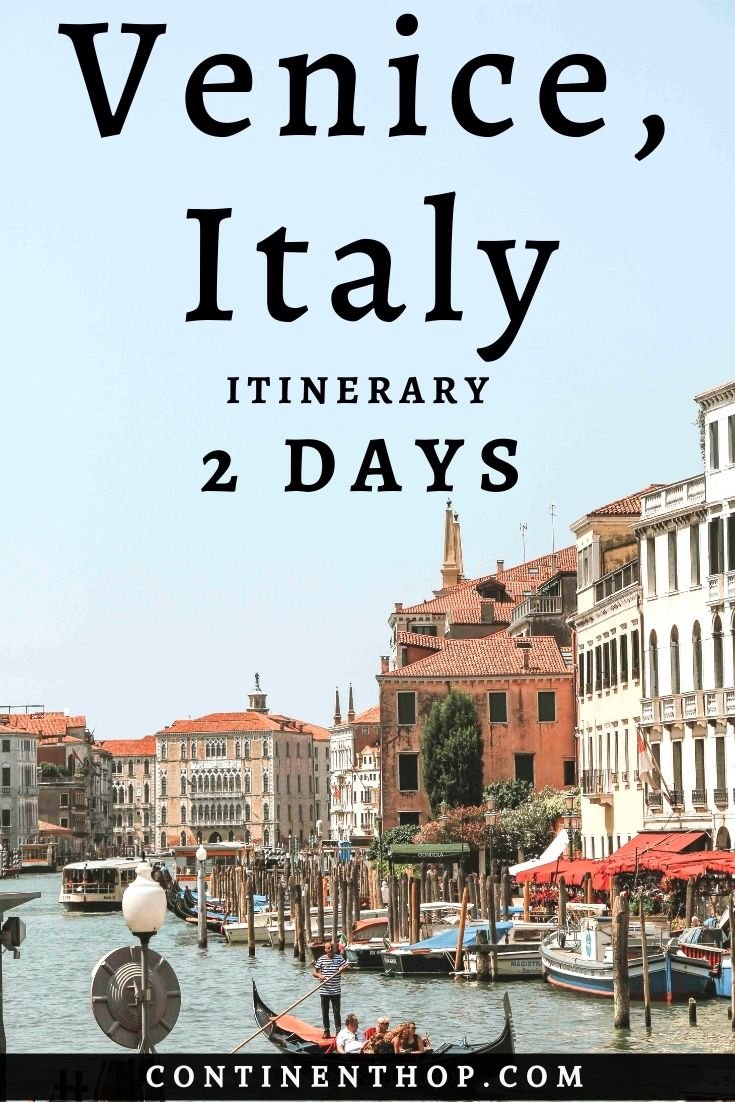
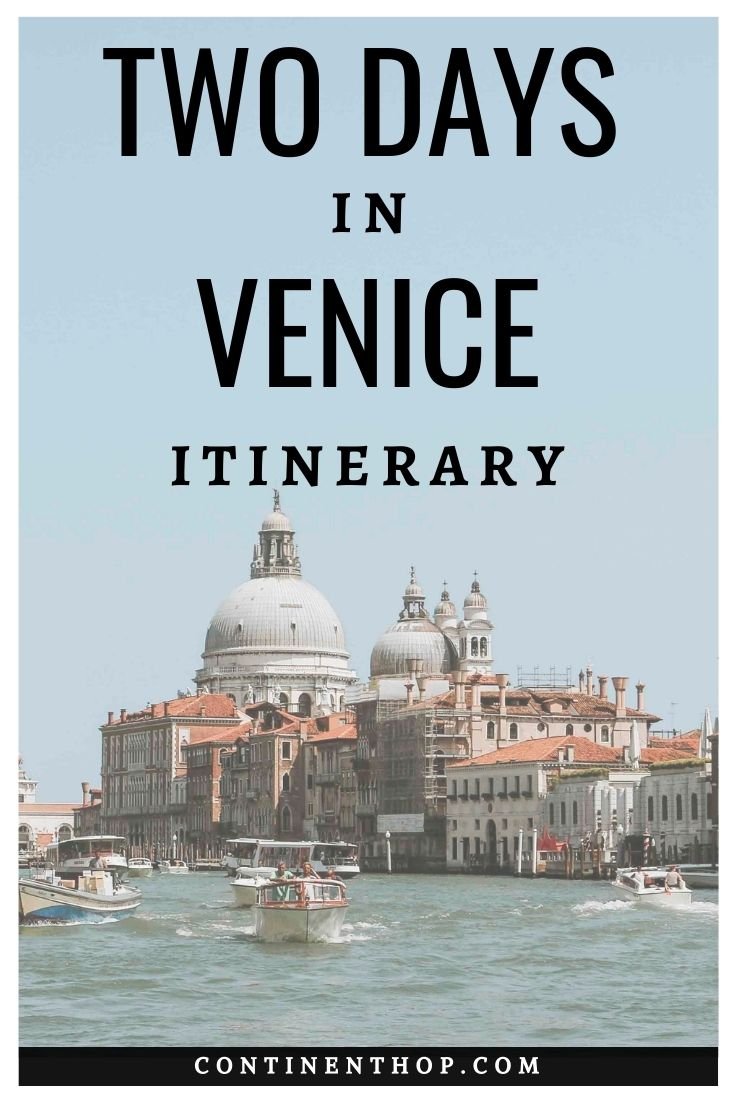
What’s the best summer holiday you’ve had?
Let me know in the comments below!
EXPLORE MORE OF ITALY
Some of the links on this post are affiliate links. These do not cost you extra to use, but will help provide Continent Hop with a small commission if/when you purchase through them, to recover some of the costs of running this website and providing free content to help you plan your travel. I appreciate your support!

